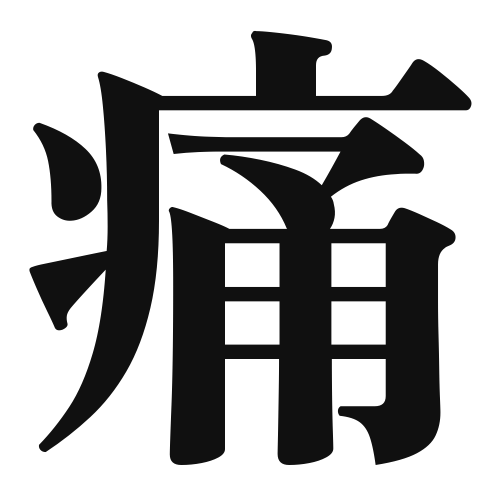1. Overview of Meaning
The kanji “痛” (pronounced “ita” in Japanese) means “pain” or “hurt.” It is used to describe physical discomfort or emotional distress.
2. Formation and Radical
The kanji “痛” is a phonetic compound (形声文字) that combines the radical for “sickness” (疒) with the phonetic component “痛” (which also relates to pain). The radical indicates a connection to health and illness.
The radical is 疒, which signifies sickness or disease, emphasizing the kanji’s association with pain and discomfort.
3. Examples of Usage
Common words and phrases that include “痛” are:
- 痛み (いたみ, itami) – pain
- 頭痛 (ずつう, zutsuu) – headache
- 腹痛 (ふくつう, fukutsuu) – stomachache
Example sentences in daily conversation:
- 「頭が痛いです。」(あたまがいたいです。) – “I have a headache.”
- 「お腹が痛い。」(おなかがいたい。) – “My stomach hurts.”
4. Synonyms and Antonyms
Similar kanji with related meanings include:
- 苦 (く, ku) – suffering, which emphasizes a more intense or prolonged state of pain.
- 痛 (いた, ita) – specifically refers to the sensation of pain.
Antonyms include:
- 快 (かい, kai) – comfort or ease, representing the absence of pain.
5. Cultural and Historical Background
The kanji “痛” is deeply rooted in Japanese culture, often appearing in discussions about health and well-being. It reflects the importance of understanding and addressing pain in both physical and emotional contexts.
Proverbs and idiomatic expressions related to “痛” include:
- 「痛い目にあう」(いたいめにあう) – “to experience pain,” often used to describe learning a lesson the hard way.
